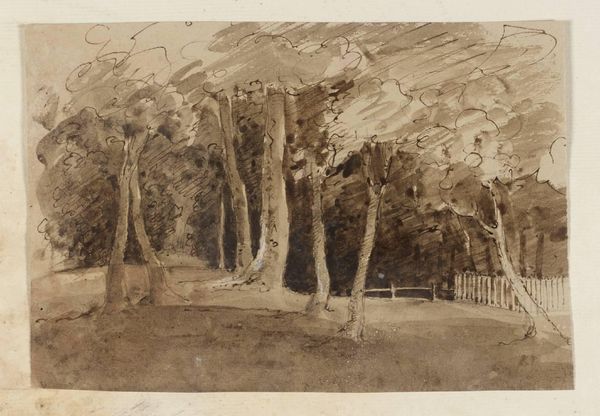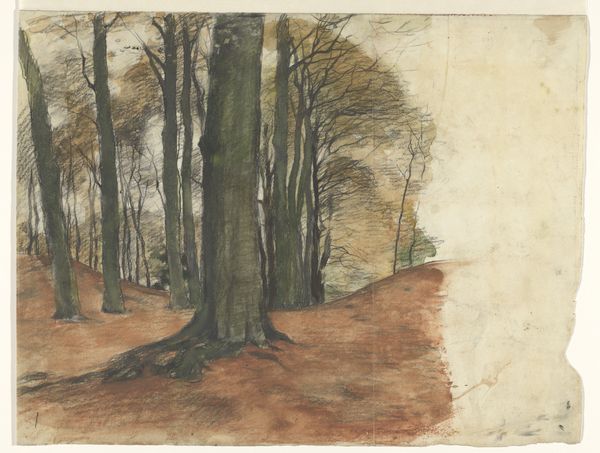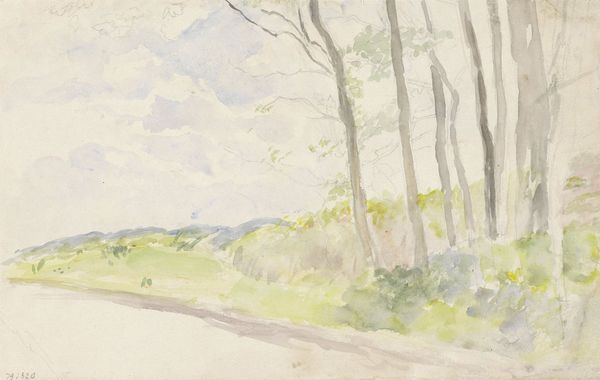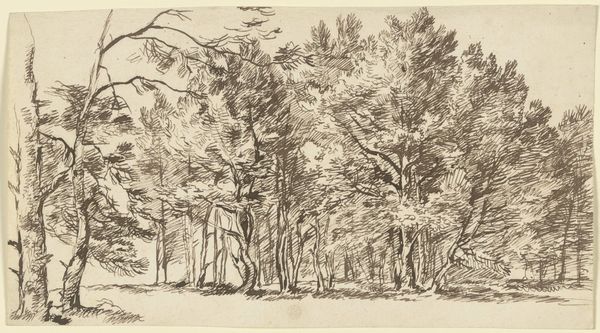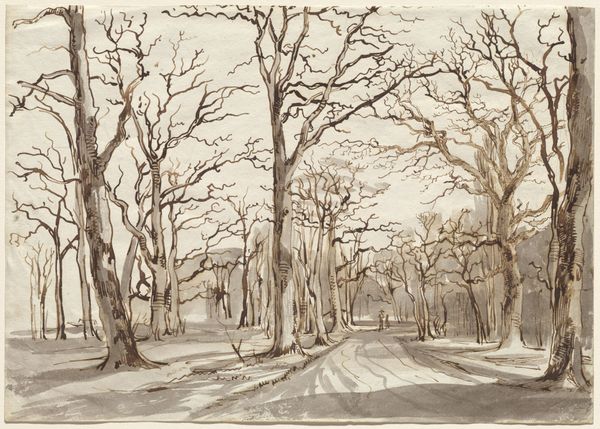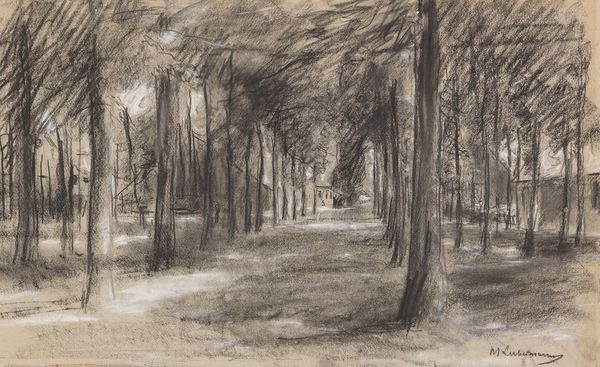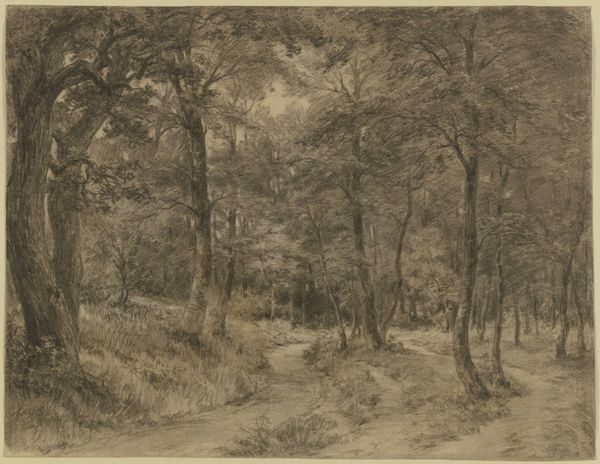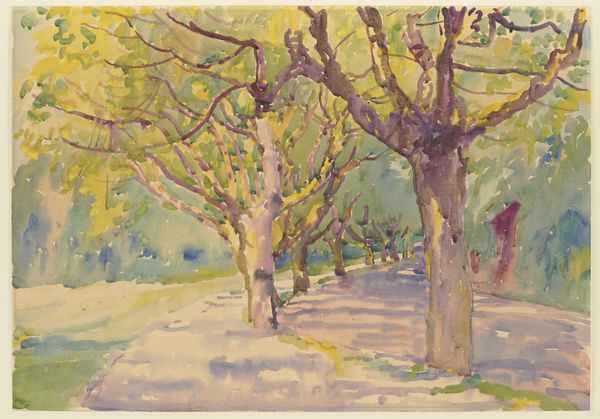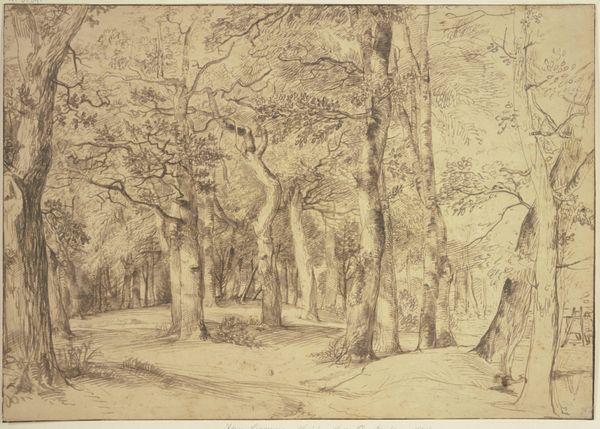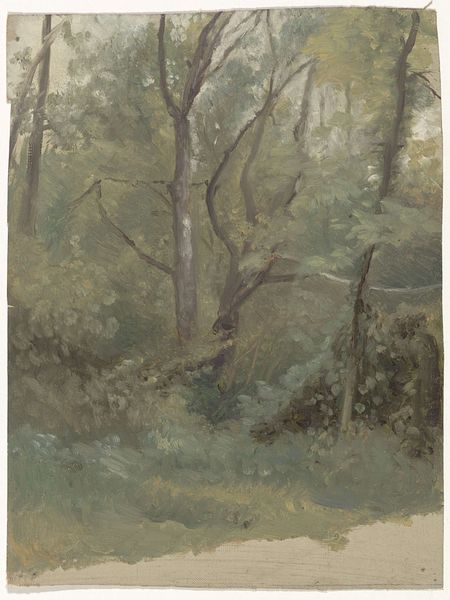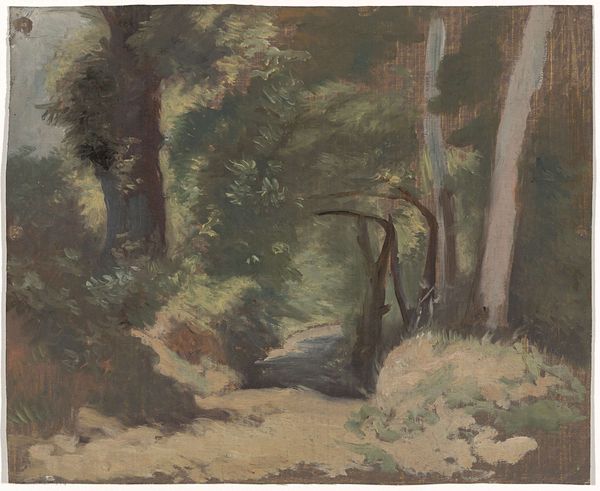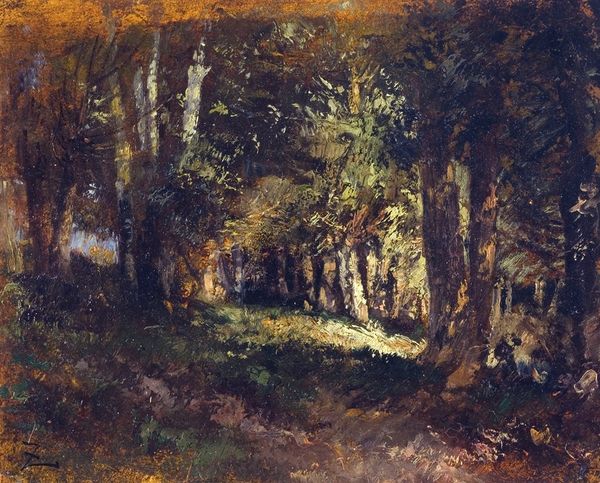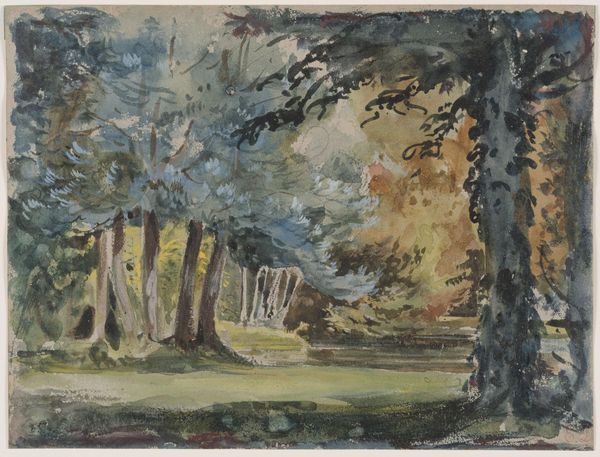
Dimensions: support: 250 x 334 mm
Copyright: CC-BY-NC-ND 4.0 DEED, Photo: Tate
Editor: Here we have John William Inchbold's watercolor, Forest of Fontainebleau: A Path in the Woods. The loose brushstrokes create a hazy effect. What strikes me is how the light seems to filter through the trees, creating a sense of depth. What do you see in this piece? Curator: I see the artist engaging with the physical properties of watercolor to depict a landscape marked by both natural beauty and human intervention. Consider the paper itself – its absorbency dictating the flow and layering of pigments. What was the relationship between labor and leisure during Inchbold's time, and how might this forest scene reflect those social dynamics? Editor: That's interesting, I never thought about the social context of landscape paintings like this. Curator: The forest wasn't just a backdrop; it was a site of both recreation and resource extraction. Think about the material implications – the wood harvested, the pigments sourced. Reflecting on this, how does it alter your view of the artwork? Editor: I see it now; it’s a complex interplay of nature, industry, and social forces, not just a pretty picture.
